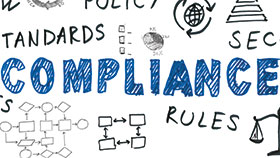

The emerging Industrial Internet of Things (IIoT) has major implications for the industrial automation profession. Standards development organisations (SDOs), technology suppliers and end-users each have a role to play in interpreting this concept to separate the hype from the practical opportunities and identify the areas where new or revised standards may be required.
The emergence of IIoT
Several references trace the IIoT concept back at least 10 years, with origins in the use of RFID and similar technologies. More recently, the general IoT concept has been interpreted in an industrial context, leading to initiatives such as Industrie 4.0 and IIoT.
The full implications of IIoT are still not well understood or broadly accepted. What is clear is that industrial applications require far greater robustness, security and deterministic response than the general or consumer applications, which were the original focus of IoT. Yet in many cases, the emphasis on functional potential makes little or no provision for the need for secure and robust solutions in this connected environment.
Additional drivers include increased visibility of information, deeper integration of specific functions and increased device and system capability. Perhaps the most significant value is in the greatly increased amount of information or data and associated analytics that can be provided using IIoT technology.
Interoperability standards and common architectures to connect smart devices, machines, people and processes are essential to realise the full promise of IIoT. Several standards development organisations have been attempting to address these challenges for many years.
The automation profession and standards
Automation professionals have long emphasised the need to develop and apply standards to improve the quality and consistency of the services and products they deliver to their employers and clients. Thus, standards development organisations such as IEC, ISA and IEEE have extensive portfolios of discipline-specific standards addressing practices and technology in this area.
In the case of ISA and IEC, much of the emphasis has been on process and functional standards in areas such as system integration, process safety, alarm management and industrial control systems security. Standards such as ISA-18 (IEC 62682), ISA-84 (IEC 61511) and ISA-95 (IEC 62264) clearly define many of the essential elements of modern automation systems.
More general technology standards have also been adopted as automation systems have evolved to include more commercial off-the-shelf technology in areas such as network (e.g. Ethernet), data communications (e.g. OPC-UA), database management (e.g. SQL) and operating systems. Process, functional and technical standards have become essential resources guiding development and application decisions related to process automation in a wide variety of industries.
IIoT standards
Advancement of IIoT will also require the identification or development of new standards. As has been the case for other similar areas such as systems integration and wireless communications, this begins by establishing a general reference model or architecture. Several organisations have offered proposals to meet this need.
The Industrial Internet Consortium (IIC) was formed as a group under the Object Management Group (OMG). Its purpose is to enable the connection and optimisation of assets by identifying the requirements for open interoperability standards and defining common architectures. The IIC clearly states that it does not intend to develop standards, but rather to work with SDOs to position and adapt existing standards into a common context for IIoT. This context is described in the form of an Industrial Internet Reference Architecture.
ISO and IEC have also been developing a similar model, with groups working on ISO/IEC WD 30141 (Internet of Things Reference Architecture or IoT RA). Finally, IEEE has an effort under way to develop a standard called IEEE P2413 (Standard for an Architectural Framework for the Internet of Things). While all three SDOs initially stated a goal to publish something in 2015, it appears that work is still ongoing.
These and other such efforts must come together or at least align if we are to make real progress in establishing IIoT across a broad range of suppliers and industries. In the meantime, individual suppliers and industries are moving forward with their own solutions.
Automation SDOs respond to IIoT
Clearly, automation-related standards are important components of IIoT and the IIoT concept is very likely to influence the direction of current and future standards in this area. IIoT extends the fundamentals of automation into new areas, and on a much larger scale. Rather than focusing on a single industrial process, it reaches across logical, physical and organisational boundaries to collect information, conduct analyses and support decisions.
Although traditional industrial automation and IIoT are not the same, they share many of the same challenges. Both will continue to evolve, but in different ways and at very different rates.
The lessons learned and experience gained over decades of practicing industrial automation must also be applied to the pursuit of IIoT objectives. Realising the full potential of IIoT will require creating, interpreting, and applying a comprehensive set of standards. This will in turn have implications for existing standards.
Rather than creating additional, possibly competing, reference models or architecture, a better approach would be for automation-focused SDOs to closely monitor and perhaps contribute to the development of some of those already proposed. Automation SDOs could accomplish this by fostering more dialog and collaboration with the newer organisations devoted to IIoT, such as the Industrial Internet Consortium and the various committees working on Industrie 4.0 in Europe.
ARC invites automation and industrial IT end users to share and learn from case studies related to this column at the upcoming ARC Industry Forum in Orlando, Florida, Feb. 6-9, 2017.
For more information contact Paul Miller, ARC Advisory Group, +1 781 471 1141, [email protected], www.arcweb.com
© Technews Publishing (Pty) Ltd | All Rights Reserved